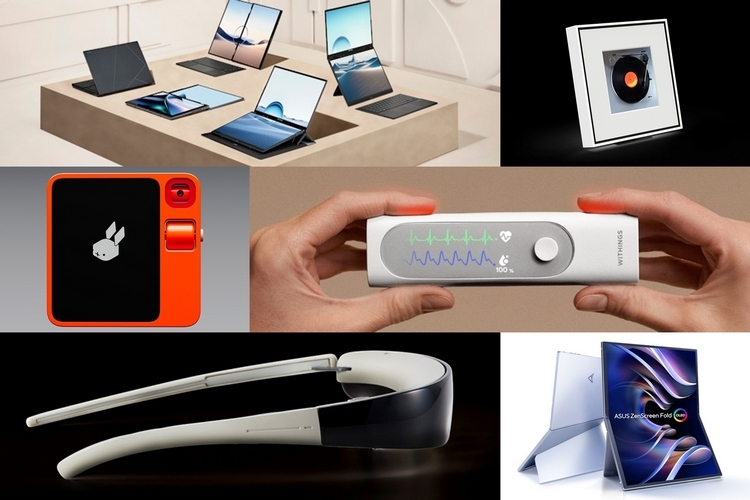
Tech is the order of the day every year at CES and this year is no different, with thousands of companies showing off their latest and greatest wares. It’s a dizzying trade show, with rows upon rows of booths, each showcasing their own take on products that seek to improve our everyday lives.
Electronic gadgets are, of course, a major part of the show, spanning everything from pocket-sized portables and wearable devices to clever accessories and AI-powered rigs. Some are distinctly novel and original, while others iterate on existing tech in clever and creative ways. Whichever the case may be, the best gadgets at CES 2024 serve as a showcase of innovative engineering, brilliant industrial design, and a clear vision of how tech can help shape our collective future.
These are the best, coolest gadgets we’ve seen at CES 2024.
Skyted Silent Mask

Taking a call in public is not the most comfortable thing – nobody wants to air personal business to everyone within earshot. Problem is, there’s not much you can do if you do decide to take the call, since you will often need to talk a bit louder in public if you want to be clearly heard. The Skyted Silent Mask, which is currently being shown off as a functional prototype at CES, offers a way to make those very public calls just a little more private by letting you make those calls inside a sound-absorbing mask. Yep, it absorbs sounds, reducing the chatter that leaves its confines by 25 decibels, enough to keep most of the people around you from hearing whatever comes out of your mouth. The mask is equipped with a wireless mic that you can pair with your phone, allowing you to make hands-free voice calls without having to use any additional device. The product is currently crowdfunding on Kickstarter, priced starting at $249, with a December 2024 ship date.
OrCam Hear
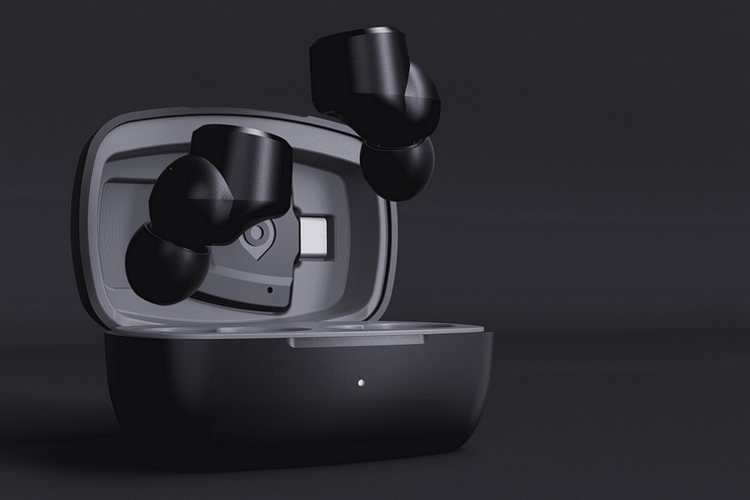
Hearing aids amplify any sound picked up by its microphone, such that it can be heard by individuals with hearing impairment. Problem is, they amplify, pretty much, every sound they pick up, which can be an issue if you’re trying to hear a single person in a loud and crowded area, like a party or a trade show floor. These hearing-assistive earbuds are designed to help with that by letting you choose which voices you want to amplify from the companion app, which uses AI to isolate the different individual voices it picks up and gives you a handy list to choose from. This makes it easier to hold conversations even in crowded places with plenty of bustle, making it a potentially valuable tool for both the hearing impaired and those who are just overwhelmed from all the noise around them. It’s still currently just a prototype, but they are planning to release it later in the year.
Nanoleaf Skylight

Nanoleaf makes some of the best smart lights in the market, from their classic modular hexagon lights and other shaped lights to smart bulbs and more. Their newest smart light reprises the same modular design as their hexagon lights, albeit with more powerful illumination that makes them functional as ceiling lights, making them a viable replacement for traditional light bulbs. You will need to hardwire one of the light panels to your home’s electrical system, although everything else you add after that (up to 99 additional ones) can just draw power via contact with the other modules. Each Skylight module comes in a one-foot square shape, with 1,400 lumens of brightness and a color temperature range of 2700K to 6500K, so a few of these will be enough to provide suitable illumination even for bigger rooms. These are multi-color LEDs, by the way, so you can use them as regular daylight-style illumination or use them to set the mood with any of 16 million available colors.
Withings BeamO
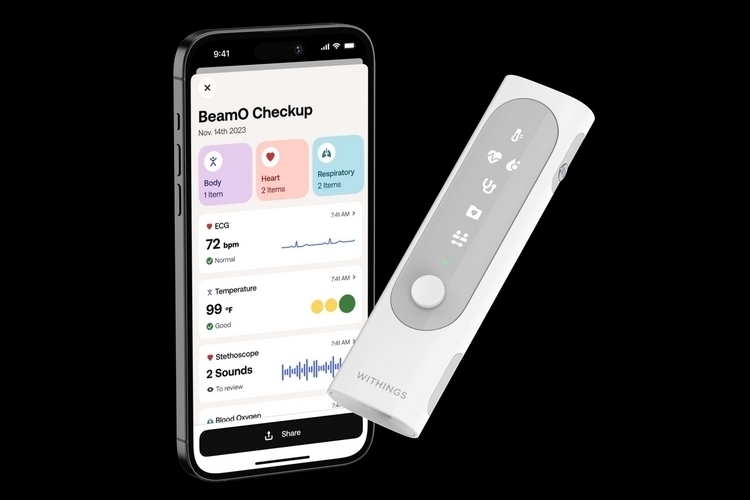
A versatile device for conducting your own medical checkups at home, this “multiscope” combines a thermometer, stethoscope, ECG, and oximeter in a single compact device no bigger than your standard AC remote. Use the thermometer to check your temperature, the ECG to gather heart rate readings, the oximeter to check your blood oxygenation, and the stethoscope to make an audio recording of the sounds your heart and lungs make when you breathe. Conducting a full checkup using all sensors takes less than a minute, making it easy to integrate into your daily routine. All readings can be stored on the companion app, too, making it easy to share with your primary physician, in case you want to do a remote consultation. It’s scheduled to hit shelves in June, priced at $250.
Samsung Music Frame

We’re huge fans of Samsung’s Frame TV, which is such a simple concept that they executed to absolute perfection. As such, it was the first thing we thought of upon seeing Samsung’s wall-mounted wireless speaker, which is housed inside a framed piece of wall art. It’s not entirely a new idea, as we’ve seen Ikea and Sonos collaborate on a similar speaker not long ago. We have to admit, though, this looks a lot better than Ikea’s version. It houses the speaker in a thick, wall-mounted square frame that can be customized with your own choice of photograph or art print, making it look like a stylish decorative piece while hanging in any part of the house. Inside, it gets a pair of woofers firing in the rear, as well as two tweeters and two mid-range drivers all blasting their sound out front, so this should deliver some pleasant-sounding tunes. Even better, it’s meant to work Samsung’s Q-Symphony technology, so your Samsung TV or soundbar can use the speaker as part of its home theater setup for a more immersive surround sound experience. No word on pricing or availability, as of now.
Razer Project Esther
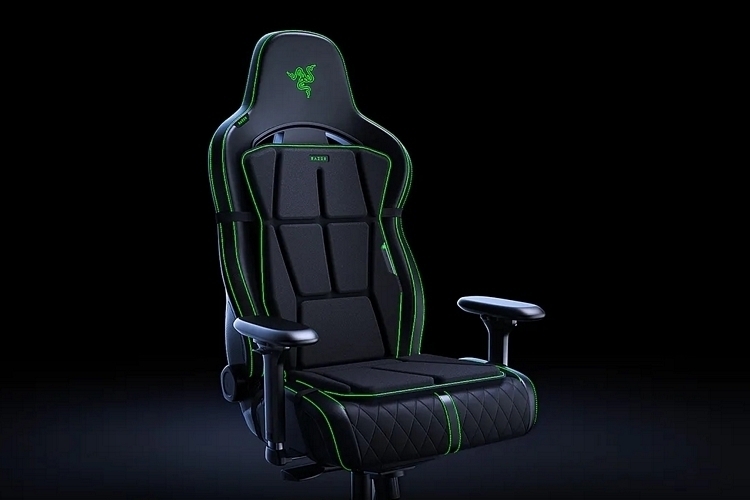
If you enjoy the rumble vibrations on a controller while playing, we imagine you’re going to be a lot more excited feeling those same tactile sensations all over your body. That’s exactly what Razer’s gaming cushion delivers. Designed to secure on top of any gaming chair, the cushion’s 16 haptic actuators can all be controlled individually, allowing devs to impart sensations of direction, distance, and location for all the in-game events you’ll encounter. Even better, the haptic actuators can take audio from a connected PC and turn it into matching rumble vibrations, so you can enjoy the haptic sensations even with games that don’t support it, since it can turn those in-game sounds into matching tactile sensations. It’s not limited to games, either, as it will also respond to movies, music, and, pretty much, any kind of content with accompanying audio onboard. For now, it’s only a concept, but this seriously feels like something that can be interesting in the real-world.
Vixion Vixion01 Autofocus Eyewear
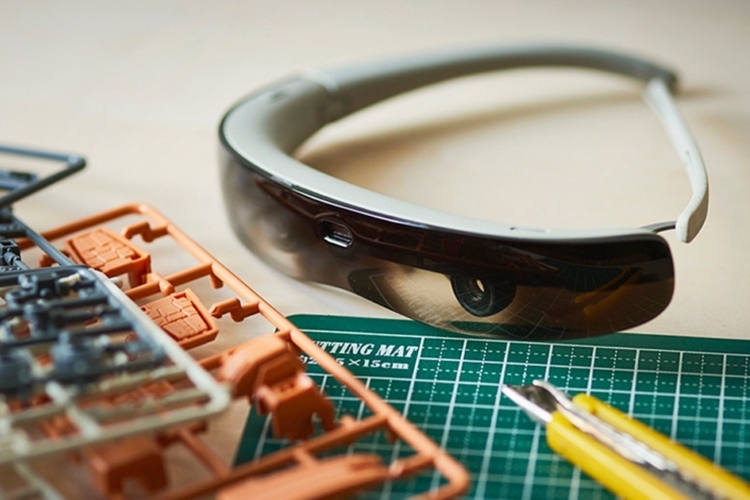
When using an older camera, it’s not unusual to require fiddling with the lenses to get it to focus right, especially when switching to a new subject at a different distance. Of course, modern autofocus systems have solved this for the most part, allowing you to simply aim the lens at your new subject and wait for the camera to fix the focus on its own. Human eyes have our own version of this autofocus system, allowing us to easily focus our sights from one spot to another. Problem is, our eyes can stiffen as we get older, making it just a tad more difficult to quickly do the switch. These “autofocus glasses” look to help that. Equipped with a front-facing time of flight sensor, the wearable can identify what subject you’re looking at and measure your distance from them, after which it will adjust its integrated lenses to ensure you get optimal focus. Basically, it gives you sharper eyesight for objects both near and far, alternating between them swiftly and seamlessly, all without putting any added strain on the eye muscles. It’s currently available for preorder in Japan, priced at 99,000 yen (around $689).
Proclaim Custom-Jet Oral Health System

Water flossers are great, allowing you to clean between the teeth without having to use an uncomfortable piece of string. Problem is, they still require a bit of work to reach each individual gap and can get pretty messy in short order (all the excess water needs to go somewhere). This unique water floss uses a mouthpiece that you can just put on your teeth and leave to handle all the flossing work on its own, requiring you to do nothing other than push a button. According to the outfit, the mouthpiece comes with 60 built-in water jets angled to clean bacteria, plaque, and any food morsels stuck between the teeth, with the device catching any overflowing water and funneling it straight to the exit tube that you can just position directly to hit the sink. To ensure the mouthpiece fits you, each mouthpiece is custom-made for the user, so when you order, they will direct you to a partner facility that will take a 3D scan of your mouth before everything can be processed. It’s available now, priced at $799.
Baracoda Bmind Smart Mirror

People who like to look at mirrors while giving themselves affirmations might enjoy this smart mirror, which asks users how they’re doing and proceeds to give them positive reinforcements based on their responses. That’s right, it’s your own personal Tony Robbins (or whoever is the current hot self-help guru of the moment), whose sole purpose is to help you manage stress and help improve your mood. If you don’t respond, it can analyze your expressions, gestures, and voice tone to identify your current mental state, which it can use to provide spoken affirmations, guided meditation, and even light therapy sessions. According to the outfit, it uses a combination of AI and natural language processing to provide its unusual brand of self-help. There’s a small touchscreen near the bottom of the mirror, by the way, which you can use to run a variety of apps available under its CareOS platform. It’s slated to launch end of 2024, with pricing estimated between $500 and $1,000.
Garmin Lily 2

Garmin has long made some of the best GPS sports watches out there. Problem is, they also tend to make them a tad too big for most women’s tastes. Except, of course, the Garmin Lily, which is smaller and more fashion-forward than, pretty much, the rest of their line. At CES this year, the outfit unveiled the next generation of the Lily sports watch, bringing all the usual fitness, health, and smartwatch features found in the outfit’s watches. Since it’s made specifically for women, they highlights various features aimed at that demographic, including the ability to track menstrual cycles, monitor pregnancy, and tracking for a variety of dance fitness activities, including Zumba, Afrobeat, Bollywood, EDM, and hip-hop.
Samsung Ballie Robot

Companies have been making companion robots for homes every year for what feels like an entire decade now. So far, though, robot vacuums have been the only ones to actually make any real headway in a lot of people’s homes. Samsung’s trying once again this year with an updated version of their Ballie robot, which they’re now billing as “a true AI companion.” Controlled via voice commands, the robot can take charge of patrolling your home and alerting when anything seems amiss, while the ability to interface with smart devices allows it to fix a few things by itself, too (it can turn off the lights on an unoccupied room it passes, for instance, as well as activate the dog feeder when the pup gets hungry). A built-in projector allows it to beam images up a wall, allowing you to catch the news on the kitchen counter even without a TV in sight, making it arguably the best implementation we’ve seen of a mobile projector. No word on availability or pricing, so we’ll have to see whether Samsung thinks there’s actually a potential market for it.
Asus Zenbook Duo

We know a fair number of people who use a USB monitor along with their laptop when they’re working on the road – that second screen just comes in so handy in many situations. That’s the one of the reasons we think companies have been experimenting with a second screen on their laptops. In the past, Asus has done it by adding a smaller screen just above the keyboard. This time around, though, they’re going all in by equipping a laptop with dual 14-inch panels (3K resolution and 120Hz refresh rate each) stacked on top of each other. How does it work? Basically, they connected a pair of displays using a hinge, allowing them to fold flat like a clamshell, then added a Bluetooth keyboard that you can sandwich in between the displays. During use, you can leave the keyboard on top of the bottom display to use it like a regular laptop. For dual-screen use, though, you have to take out the keyboard and stand the displays upright via a kickstand in the back to get your on-the-go dual-monitor setup.
Nimo Planet Spatial Computer

There’s nothing wrong with working on a laptop. If you want to maximize your productivity, though, it’s not unusual to want to hook up one or two additional monitors to it, so you can keep your eye on a few other things at the exact same time. This is fine when you’re at the office, but if you’re on the field and looking to get a bit of work done at the coffee shop, it’s not entirely a viable setup. Not quite the case with Nimo Planet’s spatial computing solution, which swaps out the monitors in favor of smart display glasses that you can hook up to a palm-sized PC called the Core. You use the PC itself for directional navigation (the top side is touch sensitive and it has accelerometers for gesture input), while a Bluetooth keyboard allows you to type like you do on a normal PC. Not only can it replace what you see on one monitor, the darn thing can give you multiple displays on the glasses, allowing you to swipe through different active screens in real-time. Basically, it lets you have the 10-monitor setup you’ve always wanted, but couldn’t reasonably fit into your workspace. According to the outfit, they’re scheduled to ship in the next six to eight months. They’re currently taking reservations for the first batch with a down payment of $399.
DJI FlyCart 30

DJI has plenty of drones – drones that shoot video, drones that race other drones, and drones that carry heavy cameras for professional productions. Their newest drone, however, is designed for transporting goods, making it a full-fledged delivery drone. Designed to serve as a true workhorse, the drone has a payload capacity of 66 pounds, allowing it to deliver pretty heavy cargo, with a maximum flight distance of 9.9 miles when carrying a full payload (17.4 miles when empty) and a maximum speed of 44.7 mph, allowing it to cover big distances pretty fast. It can also fly through winds of up to 26 mph, so it can make its deliveries even on windy days, while operating in temperatures up to -4 to 113 degrees F), which should allow it to take flight most days of the year. Naturally, it comes with the outfit’s intelligent sensors and autonomous flight capabilities, making for one powerful drone. It’s expected to hit the global market at the end of the first quarter.
XReal Air 2 Ultra

Billed as an “affordable, full-featured spatial computing” device, these AR glasses look poised to be the next big thing, judging from the activity on their booth at CES. Of course, it could just be the tech-obsessed crowd at the event, seeing how previous AR efforts haven’t really taken off among a more mainstream audience. At any rate, their newest AR glasses, which are just slightly thicker and bigger than regular glasses, bring some really nice features that make it a compelling vehicle for augmented reality. For instance, it has two 3D cameras (one in each corner of the frame), which enable six degrees of freedom (6DOF) positional tracking, allowing users to map their environments and use their hands to interact with virtual elements. On the display front, it delivers a 1080p picture to each eye, with 120 Hz refresh rate, 500 nits of brightness, and a 52-degree field of view. It also boasts support for Apple’s spatial video tech, so you can use it to watch those spatial content filmed on the iPhone 15. For now, the hardware is meant exclusively for developers, since they’ll need a robust ecosystem of apps if this thing will actually garner serious traction, although consumers can also get one if they want to be early in on the tech. It’s available now, priced at $699.
Jackery Solar Generator for Rooftop Tent
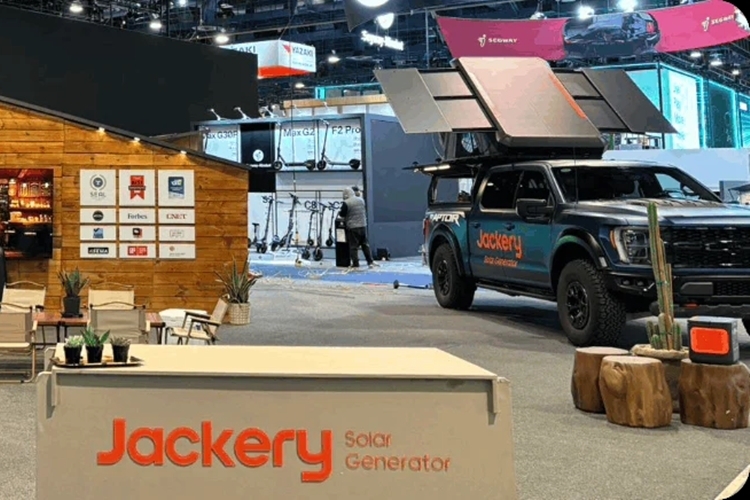
Your rooftop tent is nice and all, but if you’re going to be truly comfortable in the outdoors, it would be nice to enjoy some electric creature comforts. That’s exactly what you can get with this ensemble, which combines a compact rooftop tent with a 1000W solar panel array, allowing you to generate power while you explore and adventure during the day. According to the outfit, the solar setup can produce around 4 to 5 kWh of energy throughout the course of a day, which it stores in the accompanying 1.26 kWh power station, giving you a few more options in getting comfortable while adventuring out in the wild. Originally just a concept, Jackery has announced that they plan to make it a real product, with production slated to commence at the end of the year.
Segway GoKart Pro 2
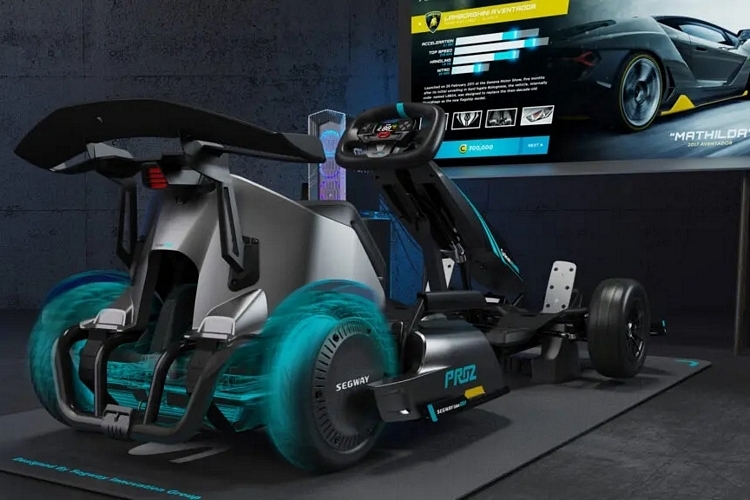
We’re really impressed with how Segway transformed their “hoverboard” scooter into an even more fun go-kart. Even better, we love how they further iterated on the concept, eventually releasing the 23-mph GoKart Pro over three years ago. Turns out, they’re not done with the darn thing as they debuted the GoKart Pro 2 at CES this year. The new go-kart has an even faster top speed of 26.7 mph, all while being able to drive up to 15.5 miles before requiring a recharge. It’s also sportier than ever with a steering wheel that look straight out of a race car, along with a host of buttons that look like the ones you see on a modern gamepad. That’s because the steering wheel is also meant to serve as a racing wheel for video games, allowing you to use the whole go-kart as a racing cockpit, which, we’ll be honest, makes it incredibly more attractive than its previous iterations. Oh yeah, the rear of the go-kart is still one of those self-balancing hoverboards, so you can take it out and use it if that’s still an acceptable thing to do in your neighborhood. No word on pricing or release date, yet.
Asus Zenscreen Fold

Easily the most interesting monitor at the show, this 17.3-inch folding OLED panel can literally collapse into half its size, making it possible to slip in a bag and bring with you on-the-go. Designed for portable use, the monitor connects to your laptop via a USB-C connection, so there’s no need to run a separate power line, while an embedded allows you to securely set it upright on any flat table, making it very convenient to use in the field. It can be used as a single 17.5-inch display with a 2,560 x 1,920 resolution or as two 12.5-inch 1080p displays, while boasting 100 percent coverage of the DCI-P3 color space. When folded, by the way, it looks like one of those netbooks from over a decade ago, making it very compact. No word yet on availability or pricing, but we can’t imagine this not coming to market. It’s just so good.
Rabbit R1 AI Assistant

If you want to something online on-the-go, you pull out your phone and use whatever app is needed to get the task done. It’s simple enough, but it does require you to learn an app and interact with a whole bunch of screens each time out. This standalone AI assistant wants to eliminate that. Instead of using an app, you just pull out this device and tell it what you need, then let its AI go to work doing the task on its own. It has its own SIM card slot and Wi-Fi connectivity, so it can hop onto the internet on its own, although you will have to give it access to your various online accounts, which you can do via a web portal. In case, the AI doesn’t know how to do something, you can teach it to by simply pointing its onboard camera to your desktop or phone screen while you do the errand yourself. Will people be onboard with carrying another device along with their smartphone for this function? We’re not sure, but it’s definitely an interesting proposition (we’d be more excited if they just made it an app, to be honest).
L’Oreal AirLight Pro
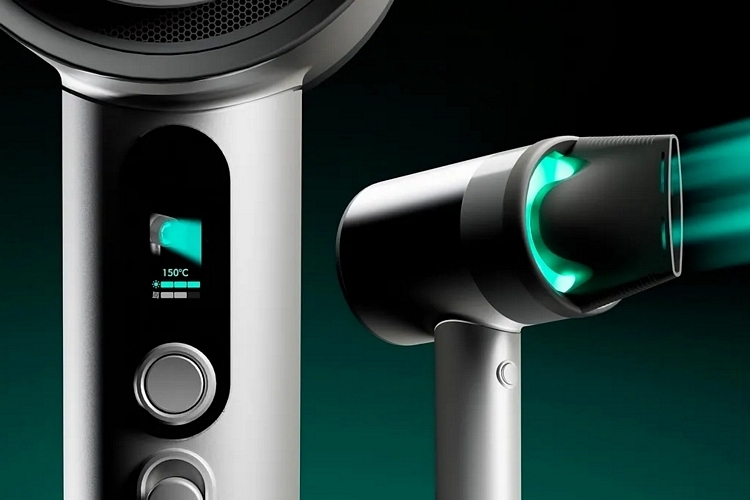
Dyson changed the hair dryer game with the launch of Supersonic back in 2016, spawning an entire category of competitors looking to either copy or improve on the modern hair dryer design. L’Oreal’s take on the growing category uses a 17-blade fan and a high-speed electric motor to generate a strong blast of air, while activating a specific frequency of infrared light to more efficiently dry water on the surface of each strand of hair without the need to add more heat. According to the outfit, this combination allows it to dry hair 30 percent faster while using 31 percent less energy compared to traditional hair dryers, making it an overall more efficient tool for your post-shower beauty needs.
Xgimi Horizon Max 4K

We love this upcoming projector from Xgimi, which boasts an impressively bright 3,100 ISO lumens, allowing you to bring high-quality big screen viewing on the wall without having to turn your living room into a pitch black space. Its talents don’t end at the brightness, either, as it also boasts a 200:1 contrast ratio, DTS audio support, and excellent image optimization. How good is it? Apparently, it’s so good that it’s been awarded the IMAX Enhanced certification, allowing it to play all the IMAX Enhanced content available from all your favorite streaming platforms.
MSI Claw
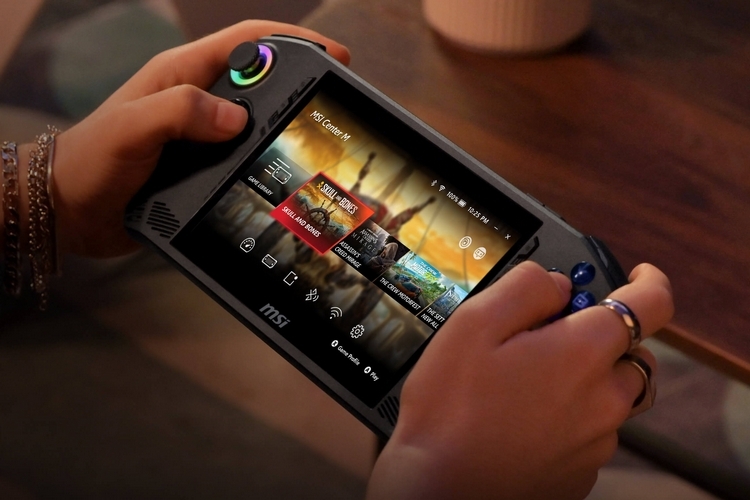
MSI launched its entry to the gaming handheld category at CES and it runs on Intel’s new Core Ultra chips, which, MSI claims, outperforms AMD’s chips in performance and battery life (at least, with the chips currently used in other gaming handhelds). Gamers enjoy their PC games on a 7-inch touchscreen display with 1080p resolution, a 120 Hz refresh rate, and 500 nits of brightness, with Intel’s XeSS tech onboard to maximize FPS for the smoothest gaming experience. It’s got an asymmetrical gamepad layout with backlit controls, including Hall Effect joysticks and triggers that can hold up to long periods of gaming, while the integrated thermal system redirects airflow to cool internal components to avoid overheating during extended play. Pricing for the Claw starts at 699 with a Core Ultra 5 chip, 16GB of RAM, and 512GB of storage. It’s slated for release at the end of the first quarter.
Lenovo ThinkBook Plus Gen 5 Hybrid

At first glance, it looks like any regular laptop with a vibrant 2.8K touchscreen display running a standard Windows build. In fact, you can use it like one. However, Lenovo’s unique hybrid laptop hides a heck of a lot more tricks inside its unassuming enclosure. You see, this laptop has, basically, two computers installed on it: one inside the monitor enclosure that runs Android and one inside the keyboard enclosure that runs WIndows. When running as a regular Windows laptop, it gives you the option to also run Android through a picture-in-picture window, making it possible to work on a new mobile app you’re developing on Windows, then test it on an Android system on the same PC. You can also pull out the monitor entirely, at which point it turns into a standalone Android tablet, while the lower part of the laptop can be hooked up to an external monitor for use as a regular Windows machine. The Android and Windows systems can also share files via a common folder, so you just move any files there that you want accessible on both platforms. Seriously, this is one of the wildest, most unique, and most interesting laptops we’ve seen in a while.
.lumen Glasses

Designed to serve as an electronic guide dog for the vision-impaired, this headset is fitted with cameras and other sensors that allow it to recognize whatever’s in front of the user, which it uses to guide them on which direction to move to advance to their destination while avoiding obstacles. It relies on haptic feedback, along with auditory cues, to let the user know which direction to go at any time, making it possible for the blind to make their way around even on crowded sidewalks and walkways. Since it’s electronic, it’s also not limited to specific destinations the way trained guide dogs are, as you can literally choose any nearby location and the device can help you get there on foot. Aside from leading users around, the device can also be used to help the blind read product labels when they’re in groceries (it has built-in speakers) and all sorts of other vision-related tasks. No pricing yet, but they’re hoping to release it in the second half of the year.
Unistellar Odyssey Pro
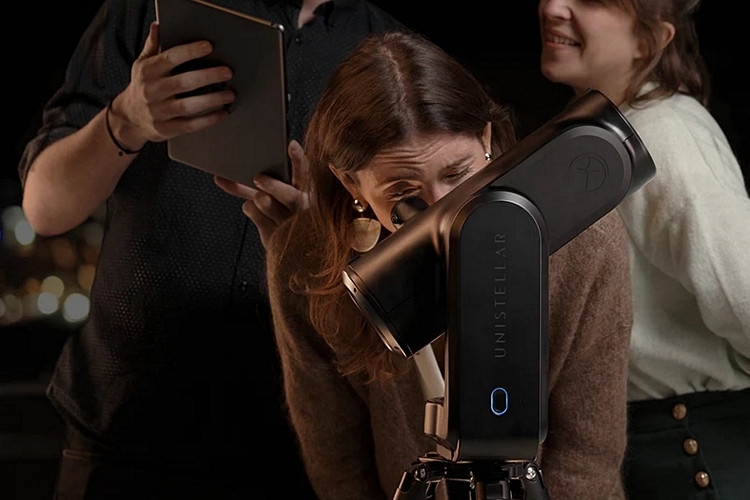
Unistellar’s newest smart telescope, this device can automatically orient itself to focus on any of 5,000 celestial objects and 37 million stars in its database with a few simple taps and swipes on the app. Unlike their previous smart telescopes, though, it’s not designed strictly for viewing deep space objects like faraway nebulae and distant stars. Instead, it’s equipped with a new Multi-Depth technology that allows it to automatically focus, whether it’s viewing nearby planets or distant stellar bodies, maximizing the sensor’s resolution for bright objects in our own solar system and switching to a pixel-binning algorithm that boosts its light-gathering capability when aimed at dimmer objects from far away. It’s also a lot easier to maintain than traditional telescopes with a mirror system that eliminates any need for realignment, making it an overall more consumer-friendly astronomical gadget. Want one? You’re in luck, since it’s available now, priced at $3,999.
Swarovski Optik AX Visio

These smart binoculars are designed for nature lovers, who want to use a pair of binos to observe birds and other woodland creatures from a safe distance. What makes it smart? Well, the digital binoculars (which also function as a camera) actually run a modified version of Android that’s equipped with AI subject recognition, allowing it to identify 9,000 different species of animals. It displays the information automatically in the diopters of the binos while you use it, so don’t have to bust out the birding guide book to figure out what kind of bird is perched on that tree branch to the east. If you take a picture with the bird or animal as the subject, it will also embedded the same information in the photo’s metadata. Optical details include 10X magnification, a 32mm lens, and a 112-meter field of view at 1,000 meters, while the camera sensor captures 13-megapixel photos. It’s available now, priced at $4,799.
LG Signature OLED T

Transparent displays have been a fixture on CES floor for the past few years, with some doing it better than others. So far, though, no one has really bitten the bullet and actually made a product with a transparent panel for release. That changes this year with LG’s 77-inch transparent OLED TV, which can literally allow you to see elements in the back while playing your favorite shows and movies. In case you want to use it like a real TV, you can do that by simply tapping a button on the remote, which will deploy the contrast film behind the OLED panel and block out the transparent parts. Pushing that button again will hide the same contrast film, turning it back into a transparent TV panel.
Hisense 110 UX TV

CES has always played host to the most cutting-edge display technologies and this new 110-inch Hisense miniLED TV has to be among the biggest standouts in the TV category. Touted as “the world’s brightest TV,” it boasts a whopping 10,000 nits of brightness, ensuring you can watch TV in the brightest room without affecting picture quality. For reference, most indoor TVs have a brightness of between 500 to 800 nits while outdoor TVs tend to have 2,000 nits or higher, so you can just imagine how much overkill this thing is in the brightness department. It also boasts a whopping 40,000 dimming zones to ensure intense contrast and dynamic range, while boasting 95 percent coverage of the BT 2020 color space, which makes it impressively accurate for a mini-LED panel, which typically covers around just 80 percent of the same color spectrum.
